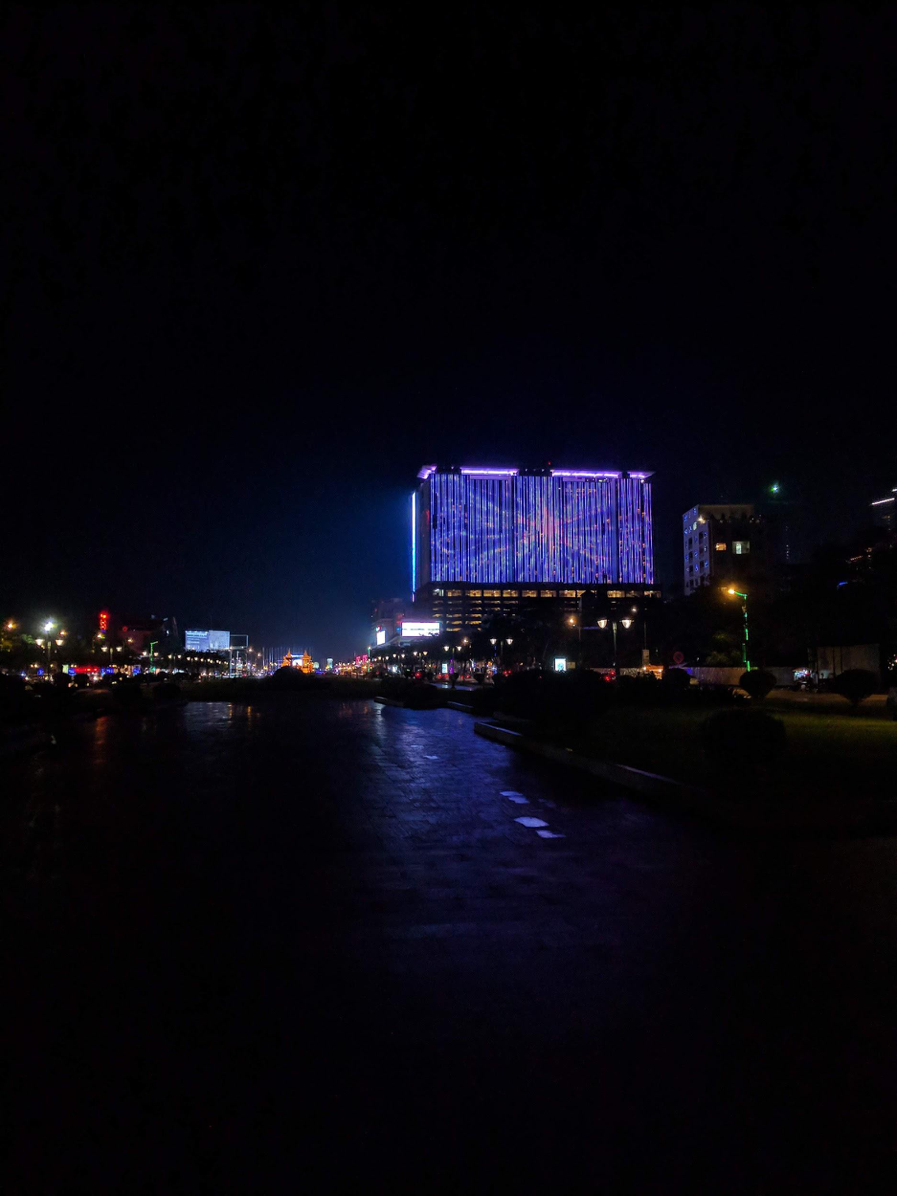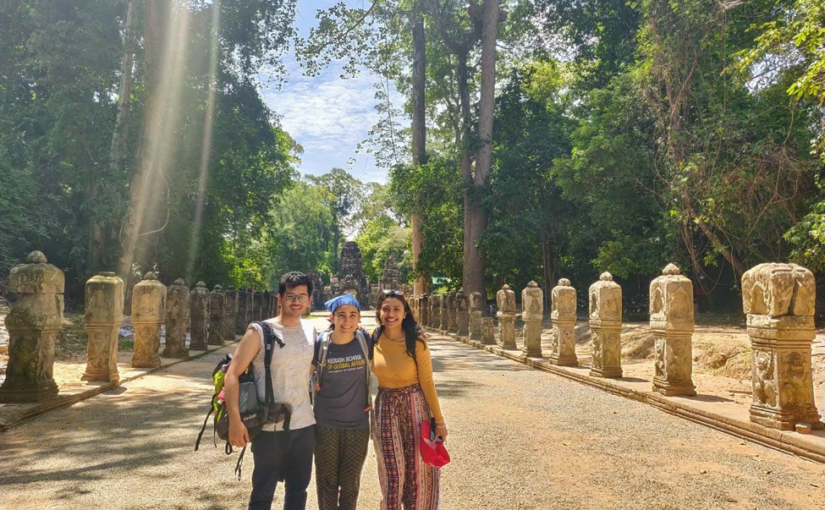by: Theresa Puhr
While climbing through the ruins of one of the many temples in the Angkor Archaeological Park in the city of Siem Reap, I was taken aback by a large tree growing on top of the temple’s walls. It was striking—the tree soared into the sky at least 20 feet high, its roots sturdily straddling the wall. For the rest of the day, I continued to think about that tree. To me, it seemed to be a perfect metaphor for Cambodia: the ruins of the temples symbolized the country’s long history, while the tree was present-day Cambodia. Present-day Cambodia isn’t simply a remodeling of an old temple. Rather, it is a stark offshoot that is attempting to stay connected to its roots.

The Khmer Empire emerged in the ninth century and ruled for five hundred years, bringing Buddhism and political and cultural development to Cambodia. This was evident at the archaeological park, where massive stone structures, full of intricate art, lay on top of human-constructed waterways. The area was bustling with tourists, and it was easy to get caught up in the awe-inspiring complex of temples.
However, small details remind you of Cambodia’s darker, more recent history. At several of the temple entrances, a group of musicians serenaded visitors with traditional music. They all had apparent physical disabilities—and signs next to their performance space confirmed this, describing how these musicians were all injured by landmines. While we ate lunch with our tuk-tuk driver, he explained to us that he was not a native of Siem Reap—rather, he used to live in the jungle, fleeing from the Vietnamese during the reign of the Khmer Rouge.
Remnants of the legacy of the Khmer Rouge and its genocide of around two million people during the 1970s are ubiquitous in Cambodia. I see it on a daily basis—in the fairly young faces that surround me on the streets, in my struggle to figure out what Khmer cuisine exactly is since many recipes and culinary traditions were lost to the genocide, in the very visible survivors of the war who share their stories on the street.
At the same time, rapid economic development also dominates the landscape. High-rises are under construction, most being built by Chinese companies. Parts of the capital, Phnom Penh, are full of modern architecture and advertisements for Western luxury brands. These images of economic growth have brought to life everything I learned about Cambodia’s rapid rate of development in one of my macroeconomics class projects back in my first semester of the MGA program. Any observer can clearly see that Cambodia has made an impressive comeback over the last four decades. In reality, Cambodia’s development has only scratched the surface and has yet to reverse the damage done by the Khmer Rouge.

PICKING UP THE PIECES
According to official reports, the country’s poverty rate has experienced a massive decline and is currently sitting at 13.5 percent. However, poverty indicators that account for factors other than just income place Cambodia’s poverty rate at a much higher 35 percent. This is why NGOs like my i-Lab partner organization, Oxfam, continue to operate in the country.
Through the Keough School’s i-Lab, my team and I are working with Oxfam in both Cambodia and Timor-Leste to explore avenues to achieve financial inclusion. Inequality in Cambodia is growing: there are limited opportunities for decent work, and climate change threatens its most vulnerable populations. Thus, it is important to remember that, regardless of Cambodia’s ability to achieve remarkable economic growth in recent years, healing from trauma is a long and difficult process.
It may take generations for Cambodia to recover from its painful history and reestablish roots in its traditions. As our team works with Oxfam to improve the status of women by examining programming which addresses gender norms and researching market access opportunities in Cambodia, we will continue to be mindful of the fact that these goals cannot be achieved in a vacuum. Context matters, and we must not forget Cambodia’s complex layers of history and tradition in our work to address gender inequality.

